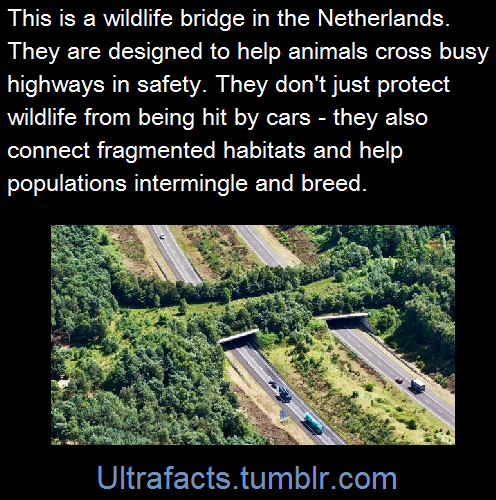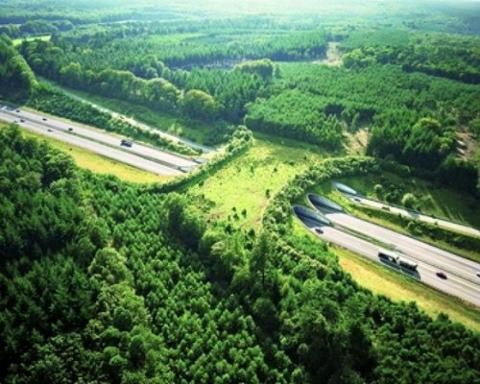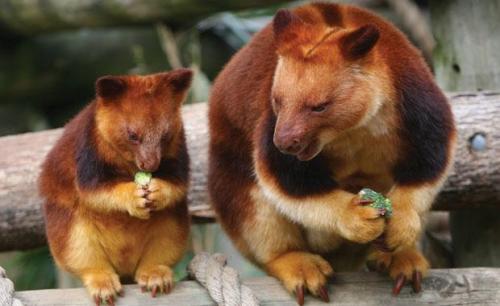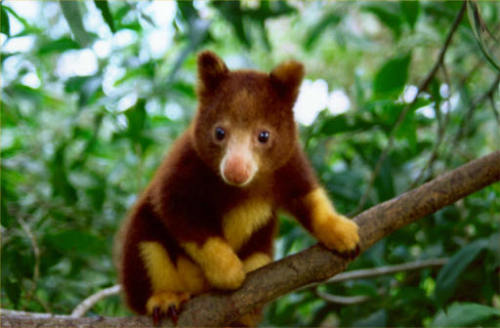Here’s A Good Resource For Anyone Questioned About The Science Of Climate Change.
Here’s a good resource for anyone questioned about the science of climate change.
Detailed at the link above are quotations from more than 140 of the World’s major Scientific Academies, Societies and Association, that agree that Climate Change is real, and humanity is to blame. Every major Scientific group or association on the planet agrees on this.
More Posts from Llamaslikesciencetoo and Others
It’s Jehol Biota Day!
The Jehol Biota is the ecosystem of the Yixian and Jiofotang Formations of northeastern China, dating between 133 and 120 million years ago in the Early Cretaceous (from the Valanginian to Aptian ages).
It is famous because of it’s method of preservation - there were ash eruptions periodically, and the fossils are Lagerstätten, meaning that they were exceptionally well preserved with articulated skeletons, soft tissues, stomach contents, and even coloration.
This has led to an amazing understanding of various types of dinosaurs and other prehistoric animals, especially very birdy dinosaurs.
These animals lived in forests around lakes, dominated by conifers but featuring the earliest flowering plants - Archaefructus, which may have been a water plant.

By Shizhao, CC BY-SA 2.5
There were dry seasons, but it was a mostly wet formation, as many of the plants grew in very wet habitats and probably stayed close to bodies of water.
The Yixian Formation was the older of the two main Jehol Formations, and featured many, many animals. Of invertebrates, there were spiders, crustaceans, dragonflies, flies, wasps, many other insects, and molluscs, of too many to list. Fish included the lamprey Mesomyzon, ray finned fishes such as Lycoptera, Peipiaosteus, Protopsephurus, Sinamia, and Yanosteus, and a potential shark. There were frogs and toads like Callobatrachus, Liaobatrachus, and Mesophryne, as well as a salamander, Liaoxitriton.

Callobatrachus by Emily Willoughby, CC BY-SA 3.0
There were mammals, too, of course - the stem-placental Acristatherium, the stem-marsupials Akidolestes, Maotherium, Zhangheotherium, and Sinodelphys, the stem-therian (Therians being the group of Marsupials and Placentals) Eomaia, the multituberculate (a group of mammals which seem to also be stem-therians) Sinobaatar, and a significant number of Eutriconodonts, a group of early derived mammals, including Chaoyangodens, Gobiconodon, Jeholodens, Juchilestes, Meemannodon, Repenomamus, and Yanoconodon.

Eomaia by Nobu Tamura, CC BY-SA 3.0
There were the weird early derived Saurians (the group consisting of Lepidosauromorphs and Archosauromorphs, so Extant Reptiles), Choristoderans - Hyphalosaurus, which is known from thousands of specimens, and Monjurosuchus. Lizards included Dalinghosaurus, similar to the modern Chinese Crocodile Lizard; Liushusaurus and Yabeinosaurus, lizards relatedx to modern geckos and skinks, and Xianglong, a gliding lizard. Turtles included Manchurochelys and Ordosemys, both Cryptodirans, a group including giant tortoises, sea turtles, tortoises, snapping turtles, and others.

Hyphalosaurus by Matt Martyniuk, CC BY 3.0

Xianglong by Nobu Tamura, CC BY 3.0
The heroes of the formation were, of course, the Avemetatarsalians. There were many pterosaurs - Beipiaopterus, Boreopterus, Cathayopterus, Elanodactylus, Eosipterus, Feilongus, Gegepterus, Gladocephaloideus, Haopterus, Moganopterus, Ningchengopterus, Pterofiltrus, and Zhenyuanopterus.

Ningchengopterus by Nobu Tamura, CC BY 3.0
Ornithischians included the ornithopods Bolong, Jeholosaurus, and Jinzhousaurus, the ankylosaur Liaoningosaurus, and the ceratopsians Liaoceratops and Psittacosaurus. There were sauropods too - the titanosauriform Dongbeititan, a potential titanosaur, and an animal that has for now been referred to Euhelopus. But the real heavyweights were the theropods.

Jeholosaurus by @ryuukibart
There were the tyrannosauroids Yutyrannus - one of the best known tyrannosauroids with feathers - and Dilong; the compsognathus Huaxiagnathus, Sinocalliopteryx, and Sinosauropteryx - the first non-avian dinosaur known to have feathers, and also with known coloration; early Ornithomimosaurs such as Hexing and Shenzhousaurus; the early derived maniraptoran Yixianosaurus; Beipiaosaurus, a therizinosaur; and tons of Chickenparrots, such as Similicaudipteryx, Protarchaeopteryx, Ningyuansaurus, Incisivosaurus, and Caudipteryx.

Yutyrannus, model from “Dinosaurs Among Us”, photo by me

Sinosauropteryx by Matt Martyniuk, CC BY-SA 3.0
There were many Dromaeosaurids (raptors), such as Graciliraptor, Tianyuraptor, Zhenyuanlong - a raptor known from nearly complete feather traces, including extremely large wings - and Sinornithosaurus, the first Dromaeosaurid found with feathers. There were also lots of Troodontids, such as Sinusonasus, Sinovenator, and Mei, as well as unnamed members of both groups. There were early-derived Avialans such as Zhongornis, Jixiangornis, Confuciusornis, and Changchengornis. There were loads of Enantiornithines, such as Bohaiornis, Eoenantironis, Dalingheornis, Liaoningornis, Longirostravis, and Shanweiniao - an Enantiornithine that had a tail fan like modern birds. There were also Euornithines - the group which contains modern birds - such as Longicrusavis, Hongshanornis, and Archaeorhynchus. In short, this was an extremely birdy formation indeed.

Zhenyuanlong by Emily Willoughby, CC BY-SA 4.0

Shanweiniao by Nobu Tamura, CC BY 3.0
The Jiuofotang Formation was slightly younger, but was similar to the Yixian in terms of the animals there. There were ray finned fishes such as Jinanichthys, Lycoptera, Peipiaosteus, Protsephurus, and Sinamia. There was the mammal Liaoconodon, a Eutriconodont, as well as an unnamed mammal similar to Eomaia from the Yixian Formation. There were also Choristoderans like Philydrosaurus, Ikechosaurus, and Liaoxisaurus.

Liaoconodon by Dylan Bajda, CC BY-SA 4.0
There were many, many, many pterosaurs. This included Chaoyangopterus, Eoazhdarcho, Guidraco, Ikrandraco, Jidapterus, Liaoningopterus, Liaoxipterus, Linlongopterus, Nemicolopterus, Nurhachius, Shenzhoupterus, and Sinopterus. And, as we shall see, there were a lot of flying theropods as well, indicating that the two groups did live alongside one another just fine, and the common narrative of “birds replaced pterosaurs” has little foundation in the fossil record.

Ikrandraco, by Fabrizio De Rossi, from www.pteros.com

Chaoyangopterus, by Joschua Knüppe, from www.pteros.com
There were only a few Ornithischians - namely Chuanqilong, an ankylosaur, and Psittacosaurus, a ceratopsian. There is also an unnamed titanosaur from the formation. As for theropods, there were a lot. The tyrannosauroid Sinotyrannus was the largest predator there, there was the Chickenparrot Similicaudipteryx, and of course one of the most famous raptors, Microraptor, which was a four-winged Dromaeosaurid that we know had iridescent black feathers.

Microraptor by @artisticthingem
There were many early derived Avialans, such as Confuciusornis, Dalianraptor, Omnivoropteryx, Sapeornis, Shenshiornis, Zhongjianornis, and my personal favorite, Jeholornis, a theropod we know was a seed-eater, which is actually quite hard to determine from fossils. There were many Enantiornithines, such as Alethoalaornis, Boluochia, Cathayornis, Cuspirostrisornis, Dapingfangornis, Eocathayornis, Gracilornis, Huoshanornis, Largirostrornis, Longchengornis, Longipteryx, Rapaxavis, Xiangornis, and one of my favorites, Sinornis, which is thought to have perched. As for Euornithines, there was Chaoyangia, Jianchangornis, Parahongshanornis, Schizooura, Songlingornis, Yanornis, and Yixianornis.

Jeholornis by Matt Martyniuk, CC BY-SA 3.0

Sinornis, by Pavel Rhia, CC BY-SA 3.0
It’s plain to see why the Jehol Biota is so fascinating. At least for me, I love it because it’s clearly one of the best pictures we have of Pennaraptoran evolution - the amount of birdie dinosaurs is absolutely ridiculous. But there’s really something for everyone here - there are titanosaur-like things, some of the earliest Ceratopsians, tons of Pterosaurs, weird Choristoderans, and even some insights into the evolution of early mammals and different types of amphibians and fish, as well as the first flowering plants. The Jehol Biota is one of the best ecosystems we know about, and it definitely deserves celebration!
Sources:
https://en.wikipedia.org/wiki/Jehol_Biota
https://en.wikipedia.org/wiki/Jiufotang_Formation
https://en.wikipedia.org/wiki/Yixian_Formation


The Mud Dragons of Calvert Island, BC
Shedding light on these mysterious marine creatures.
by Josh Silberg
Spiky headed dragons roam the ocean floor from the poles to the tropics. But these are not winged beasts from the pages of science fiction. These strange creatures are Kinorynchs, aka “mud dragons“, and they are very real.
Roughly the size of a grain of salt, mud dragons are often overlooked, but a team from the Hakai Institute and the University of British Columbia (UBC) hopes to give them the spotlight they deserve.
“Canada has very few reports on these animals. The first step is to know what is there,” says Dr. Maria Herranz, a Hakai post-doctoral scholar and resident mud dragon expert at UBC…
(read more and see video: Hakai)
images by Marria Harranz
What Life On A New Planet Will Mean









the bajau laut are some of the world’s last true sea normads, living as they have for centuries almost entirely in the waters of the coral triangle (said to contain 75% of the world’s coral species) on long boats known as lepa lepa.
hunters of fish, pearls and sea cucumbers, the bajau people free dive to depths of 20 meters, hold their breath for up to three minutes, and spend up to 60% of their time in the water submerged - the equivalent of a sea otter. it is a common practice amongst bajau people to intentionally burst their ear drums at an early age to deal with the problem of equalizing.
as photographer james morgan explains, “traditional bajau cosmology - a syncretism of animism and islam - reveals a complex relationship with the ocean, which for them is a multifarious and living entity. there are spirits in currents and tides, in coral reefs and mangroves.” the bajau people, for example, will not spit in the ocean.
in the last few decades, increasingly depleted fish stocks and government efforts have forced many to settle permanently on land and abandon a life of self sufficiency known as cari laut, or ‘searching the ocean’. a dwindling few, however, still choose to live the majority of their lives at sea.




Microbial art shows how bacteria became the most successful organism on Earth
In an attempt to unravel bacteria’s remarkable adaptive abilities, the late UC San Diego theoretical physicist and chemist Eshel Ben-Jacobs also stumbled upon a new form of art.
Ben-Jacobs grew species of bacteria in his lab and exposed them to stresses such as temperature changes, antibiotics and food scarcity in an effort to understand how they behave and cope under different environmental conditions.
What resulted were formations that indicate the different ways bacterial colonies communicate, react and make decisions about where to expand in a petri dish.
While the colors are his artistic addition, “the strikingly beautiful organization of the pattern reflects the underlying social intelligence of the bacteria,” said Ben-Jacobs.
Take a look at his gallery of microbial art

An unexpected visitor washed up on the shore of Port Fairy’s East Beach — and beachgoers refused to let him suffer. Instead, they did everything in their power to get him the help he needed.


Source
See more bridges like this from around the world
Follow Ultrafacts for more facts



(Fact Source)
Follow Ultrafacts for more facts



Video: Ocean Ramsey Swims With A Whale Shark
See The Amazing Video Here!!

Come and take a “bite” out of nature & science, attending Explorers Society Members Event. #northmuseum #stemsisters #sharks (at North Museum of Nature & Science)
-
 sanguineduck reblogged this · 6 years ago
sanguineduck reblogged this · 6 years ago -
 crazynaracuga liked this · 6 years ago
crazynaracuga liked this · 6 years ago -
 bl0ndest0ne-blog liked this · 8 years ago
bl0ndest0ne-blog liked this · 8 years ago -
 witchylostboy-blog reblogged this · 8 years ago
witchylostboy-blog reblogged this · 8 years ago -
 master7mindd reblogged this · 8 years ago
master7mindd reblogged this · 8 years ago -
 supermcraig reblogged this · 8 years ago
supermcraig reblogged this · 8 years ago -
 supermcraig liked this · 8 years ago
supermcraig liked this · 8 years ago -
 the-maura liked this · 8 years ago
the-maura liked this · 8 years ago -
 thedreamingowl liked this · 8 years ago
thedreamingowl liked this · 8 years ago -
 thejusticethatissocial reblogged this · 8 years ago
thejusticethatissocial reblogged this · 8 years ago -
 cogtropolis reblogged this · 8 years ago
cogtropolis reblogged this · 8 years ago -
 lintiff-blog liked this · 8 years ago
lintiff-blog liked this · 8 years ago -
 bgood52-blog liked this · 8 years ago
bgood52-blog liked this · 8 years ago -
 xambonie reblogged this · 8 years ago
xambonie reblogged this · 8 years ago -
 lovitdesele liked this · 8 years ago
lovitdesele liked this · 8 years ago -
 farmer-v liked this · 8 years ago
farmer-v liked this · 8 years ago -
 sci-fi-wi-fi reblogged this · 8 years ago
sci-fi-wi-fi reblogged this · 8 years ago -
 theoldself-isunavailable reblogged this · 8 years ago
theoldself-isunavailable reblogged this · 8 years ago -
 groovy-lady reblogged this · 8 years ago
groovy-lady reblogged this · 8 years ago -
 groovy-lady liked this · 8 years ago
groovy-lady liked this · 8 years ago -
 khittee liked this · 8 years ago
khittee liked this · 8 years ago -
 krosli liked this · 8 years ago
krosli liked this · 8 years ago -
 ailmentsandanecdotes reblogged this · 8 years ago
ailmentsandanecdotes reblogged this · 8 years ago -
 sunshineseashells reblogged this · 8 years ago
sunshineseashells reblogged this · 8 years ago -
 ecolivingbiologist-blog liked this · 8 years ago
ecolivingbiologist-blog liked this · 8 years ago -
 soft-raining reblogged this · 8 years ago
soft-raining reblogged this · 8 years ago -
 femonologue liked this · 8 years ago
femonologue liked this · 8 years ago -
 simonpocket reblogged this · 8 years ago
simonpocket reblogged this · 8 years ago -
 sciencetylia reblogged this · 8 years ago
sciencetylia reblogged this · 8 years ago -
 silverblue94 liked this · 8 years ago
silverblue94 liked this · 8 years ago -
 vinbep liked this · 8 years ago
vinbep liked this · 8 years ago -
 rat-nest reblogged this · 8 years ago
rat-nest reblogged this · 8 years ago -
 thetorchwoodnineroleplayerwriter liked this · 8 years ago
thetorchwoodnineroleplayerwriter liked this · 8 years ago -
 stillwater2 reblogged this · 8 years ago
stillwater2 reblogged this · 8 years ago -
 conflagrationamalgamation liked this · 8 years ago
conflagrationamalgamation liked this · 8 years ago -
 histroarry reblogged this · 8 years ago
histroarry reblogged this · 8 years ago -
 cassandroarr liked this · 8 years ago
cassandroarr liked this · 8 years ago -
 mavericosuave liked this · 8 years ago
mavericosuave liked this · 8 years ago -
 johnnyrotten2610 liked this · 8 years ago
johnnyrotten2610 liked this · 8 years ago -
 aridara liked this · 8 years ago
aridara liked this · 8 years ago -
 simitra1321 liked this · 8 years ago
simitra1321 liked this · 8 years ago
Mainly interested in ecology, but also the entirety of science.
179 posts